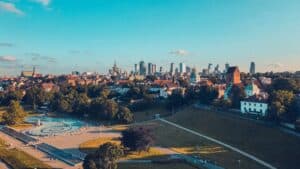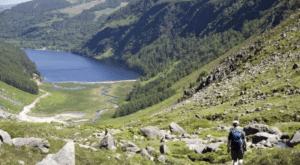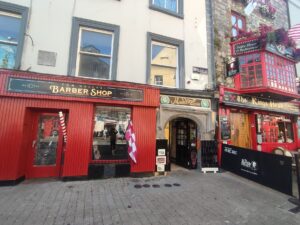Istanbul is located in the European part of Turkey. It is a cosmopolitan city and serves as the country’s economic, cultural, and historical heart. Ever since its founding in the 7th century under the name Byzantium, it has been the coveted city for many empires and nations due to its important geopolitical position as a link between Europe and Asia and its access to the Mediterranean Sea and the Black Sea through the Bosporus Strait.
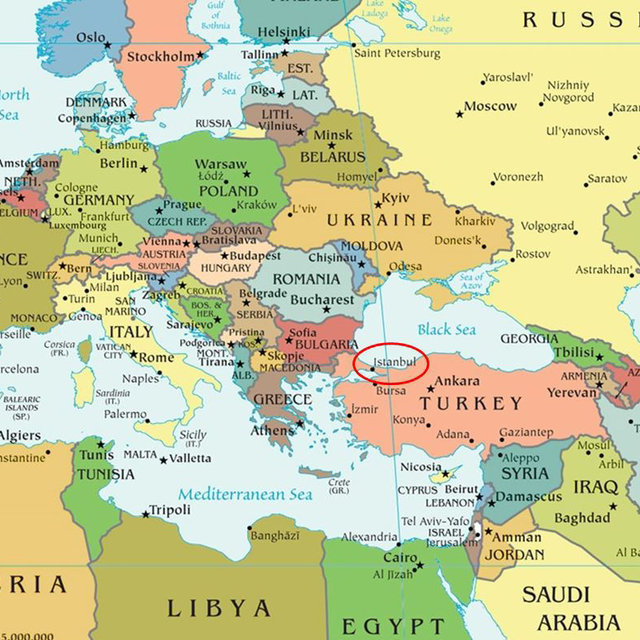
Historically Istanbul has changed many names depending on which empire/nation was in charge of the city. Its first name, Byzantium, was given to it by King Byzas who settled there. In the 300s it became part of the Roman Empire and Constantine the Great made it the capital of the entire Empire in 330 renaming Constantinople after himself. After the fall of the Roman Empire, Constantinople remained the capital of the emerging Byzantine Empire until its final fall on May 29, 1453, when the city was conquered by the Ottomans after a 53-day siege. The name of the city was again immediately changed to Istanbul which remains until today. Istanbul derives from the Turkish translation of the Greek phrase “εἰς την Πόλιν” which means “to the city” and it was used by the local Greeks to refer to the city acknowledging its importance as the largest and most vital city in the vicinity.
Where to go: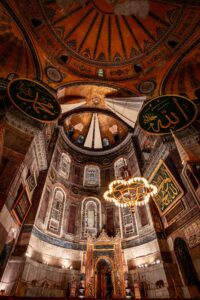
- Agia Sophia (Aya Sofya) The majestic church turned now into a mosque. It used to be the diamond of Byzantine architecture as it was among the first buildings with a fully pendentive dome worldwide. It was built during the Justinian reign and the emperor upon seeing the finished building reportedly said: “Solomon, I have surpassed thee”. After the fall of Constantinople to the Ottomans in 1453, it was turned into a mosque and four minarets, a minbar, and a mihrab were added. In 1935 the building became a museum and it was Turkey’s most popular sight in 2015 and 2019. However, in 2020 it was reclassified as a mosque by the Council of State, a decision which was condemned by UNESCO and many international leaders, among others. Agia Sophia remains a beloved sight and the symbol of Orthodox Christianity in the hearts of many Greek people and especially those who are descendants of the refugees from the areas in and around Istanbul and Asia Minor.
- Topkapi Palace The former royal seat, where sultans lived in the 15th and 16th Now it is a grand museum to which you might need to devote at least half a day. The exhibits are a very detailed demonstration of every facet of Ottoman life and the most important areas are accessible to the public, including the Harem and the treasury.
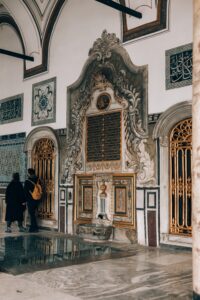

- Blue Mosque Its official name is Sultan Ahmed Mosque named after Sultan Ahmed I who constructed it between 1609-1616. It is located near Agia Sophia and it’s a functional mosque and a popular tourist attraction as well. The interior walls are decorated with hand-painted blue tiles, proof of amazing craftsmanship, and at night the whole building is bathed in blue light providing a spectacular show and illuminating Istanbul’s night sky.
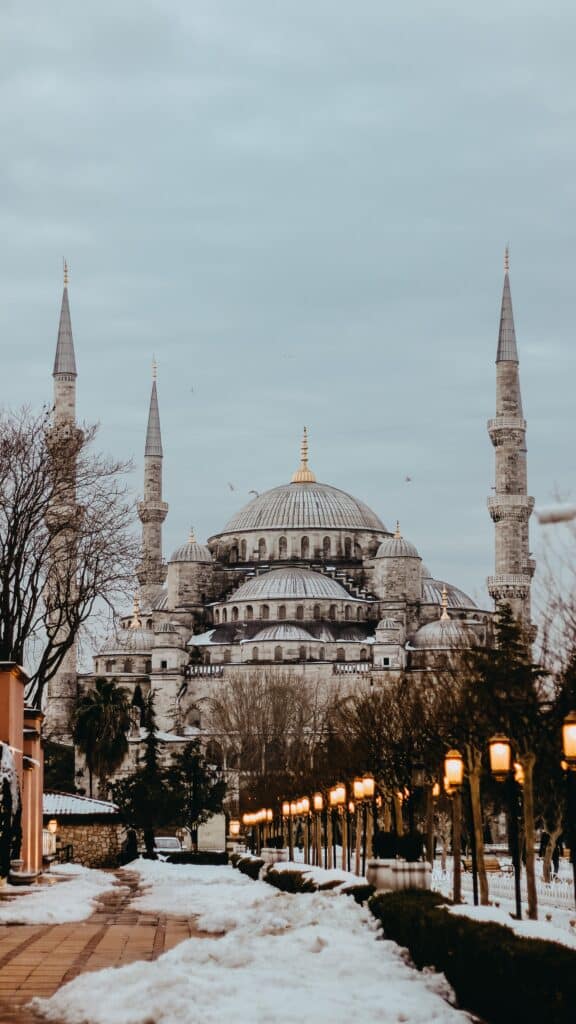
- Grand Bazaar (Kapalı Çarşı)
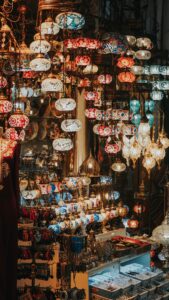 An enormous covered market, between the Nuruosmanıye Mosque and Beyazıt Mosque. You can enter through one of its eleven gates and you can shop anything you desire from Turkish souvenirs to beautiful handmade hookahs, jewelry, or antiques. Inside you will also find restaurants, smaller mosques, fountains, Hamam (Turkish baths), and places where you can exchange your currency. It is open every day, except for Sundays and bank holidays, from 10:00 to 18:00.
An enormous covered market, between the Nuruosmanıye Mosque and Beyazıt Mosque. You can enter through one of its eleven gates and you can shop anything you desire from Turkish souvenirs to beautiful handmade hookahs, jewelry, or antiques. Inside you will also find restaurants, smaller mosques, fountains, Hamam (Turkish baths), and places where you can exchange your currency. It is open every day, except for Sundays and bank holidays, from 10:00 to 18:00.
These are only a few of the many sights you can visit in Istanbul. Don’t forget to try the delicious baklava and other syrupy desserts, and the many varieties of tea (try tea with rum on a cold day, you will feel warm instantly). Walk around Taksim Square and get lost in the Spice Bazaar (Mısır Çarşısı) trying all the local spices. Istanbul is a wonderful destination and it will definitely steal your heart. Güle güle!



